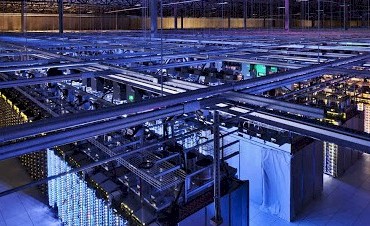Debate Heats Up Over Datacenter As Energy Hog

A healthy debate is gathering steam over how cloud providers will find new ways to power datacenters that are sure to demand more energy as computing and storage requirements soar with enterprise adoption of clouds and the emerging Internet of Things.
Datacenters are now a fixture on corporate campuses and suburban commercial zones. Along a stretch of toll road west of the Washington, D.C., Beltway, for example, former cornfields have been graded and zoned specifically for new datacenter construction. Those facilities will help crunch and store much of the big data being unleashed by the federal government.
When an unidentified company sought additional electrical power lines in northern Virginia for an undisclosed project, the locals assumed it was for yet another datacenter.
While hyperscale datacenter operators like Facebook have made concrete efforts to cut datacenter energy consumption through techniques like "free air cooling" at facilities, the reality according to industry watchers, is that datacenter energy consumption will only continue to grow. Moreover, these growing energy demands come as regulators look for ways to rein in carbon emissions at coal-fired plants that produce most of the electricity used to operate and cool datacenters.
"If business is going well and the information explosion and 'Internet of Things' continues (as we expect it to until Armageddon or the zombie apocalypse), then there will be more data processing tomorrow than there is today," argues Bob Landstrom, director of product management for U.K.-based colocation specialist Interxion.
"Datacenters will need to use more energy tomorrow than they do today," Landstrom continued. "Even if every datacenter in the world is running with a [power usage efficiency] of 1.00, using no energy at all for mechanical cooling, security, or coffee pots – datacenters will demand more energy in the future than is the case today."
According to a recent industry audit, investments aimed at improving datacenter power usage efficiency, or PUE, are hitting a wall. We asked datacenter managers if those investments have reached a point of diminishing returns.
"There is certainly a lot that the typical enterprise datacenter can do to improve energy efficiency," Landstrom argued. "Even the most basic steps for improving energy efficiency are sometimes not yet taken. There is ground to be gained here through education, energy assessments, investment in energy efficiency improvements, or a move to a commercial datacenter operator who has an established pedigree in energy efficient operations."
Which raises the question: If, as expected, energy costs keep rising and efforts to reduce emissions ramp up, will energy efficiency help datacenter operators differentiate their services from traditional operations?
Perhaps, since the number of datacenters will only continue to grow as more devices are connected and more data needs to be sifted and stored.
It is also likely that regulators will begin focusing more on datacenters that are now seen as major industrial consumers of energy. As the polar ice caps melt, regulators will come under increasing pressure to cut carbon emissions. That has already happened in Europe, where datacenter expansion is also rampant.
Soon, siting a datacenter above the Arctic Circle won't be enough. Hence, industry executives such as Landstrom of Interxion suggest regulators ought to focus more on the supply side of the energy equation.
"If it’s more profitable for the utility plant to burn coal than gas, and if we lack the large capital investment necessary for development of energy storage and sustainable generation technologies, then government is in a key position to influence the supply side of the situation for a more holistic addressing of the problem," Landstrom asserted.
Either way, datacenter operations will have to change how they operate as the pressure to reduce their carbon footprint grows.
Related
George Leopold has written about science and technology for more than 30 years, focusing on electronics and aerospace technology. He previously served as executive editor of Electronic Engineering Times. Leopold is the author of "Calculated Risk: The Supersonic Life and Times of Gus Grissom" (Purdue University Press, 2016).











